Carbon
Type of resources
Topics
Keywords
Contact for the resource
Provided by
Years
Formats
Representation types
Update frequencies
Resolution
-
The International Satellite Land Surface Climatology Project, Initiative II (ISLSCP II) is a follow on project from The International Satellite Land Surface Climatology Project (ISLSCP). ISLSCP II had the lead role in addressing land-atmosphere interactions - process modelling, data retrieval algorithms, field experiment design and execution, and the development of global data sets. The ISLSCP II dataset contains comprehensive data over the 10 year period from 1986 to 1995, from the International Satellite Land Surface Climatology Project (ISLSCP). This dataset contains: *Sea-Air CO2 Flux and Sea-Air CO2 Partial Pressure *CO2 Consumption by Continental Erosion and Riverine Fluxes of Carbon and Sediments to the Oceans *CO2 Emissions *Energy Flux Measurement *Atmospheric CH4 Data *Atmospheric CO2 Data *Global Net Primary Productivity The data are mapped to consistent grids (0.5 x 0.5 degrees for topography, 1 x 1 degrees for meteorological parameters). Some data have a grid size of 0.25 x 0.25 degrees. The temporal resolution for most data sets is monthly (however a few are at finer resolution - 3 hourly). This dataset is public.
-
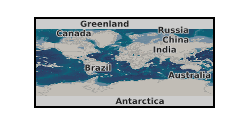
During 2010-11, as part of the Carbon Capture & Storage (CCS) Demonstration Competition process, E.ON undertook a Front End Engineering Design (FEED) study for the development of a commercial scale CCS demonstration plant at Kingsnorth in Kent, South East England. The study yielded invaluable knowledge and the resulting material is available for download here. This chapter presents the Environment and Consents Reports produced during the current FEED stage. One of the key objectives of the FEED study was to develop information across the project chain, from CO2 generation to storage in sufficient detail to enable production of applications for environmental consents. A Consents Philosophy was generated upon commencement of the FEED to develop a programme of work to achieve this objective, and identified the following groups of consents: Power and capture plant: 1989 Electricity Act - Section 36; Onshore pipeline: 1990 Town and Country Planning Act; Offshore Pipeline; Offshore Platform; Storage Consents. Some keys aspects of the FEED Consents study are: There were significant uncertainties at the outset of the project regarding the types of consent required. This was a consequence of the planning consent for Kingsnorth Units 5 and 6 having already been submitted in 2006, new government policy and draft regulatory guidance, and ongoing government consultations on regulatory issues; Many of these issues were resolved, enabling development of consent applications for the integrated power and capture plant and onshore and offshore CO2 pipeline. However in some cases, particularly for the offshore platform and storage, uncertainty remained throughout the project. In these instances the deliverable was an interpretation of the regulatory requirements that will need to be reviewed and taken into account to obtain consents during subsequent stages of the project. Further supporting documents for chapter 9 of the Key Knowledge Reference Book can be downloaded. Note this dataset is a duplicate of the reports held at the National Archive which can be found at the following link - http://webarchive.nationalarchives.gov.uk/20121217150421/http://decc.gov.uk/en/content/cms/emissions/ccs/ukccscomm_prog/feed/e_on_feed_/environment_/environment_.aspx
-

The data include organic carbon and nitrogen abundances, carbon isotopes, nitrogen isotopes, major and trace element abundances, RockEval and mercury abundances from sedimentary strata across the Paleocene-Eocene thermal maximum. The samples include areas with hydrothermal influence linked to the emplacement of the North-Atlantic Igneous Province and others distal to hydrothermal activity to evaluate the effect of hydrothermal circulation on geochemical cycles. The results are linked to Rochelle-Bates et al. (in prep.) "Hydrothermal ammonium from a Large Igneous Province mitigated early Eocene climate change". * Note: U1568A Rockeval : Red filled cells highlight unreliable data with Tmax less than 350°C or greater than 450°C, or oxygen indices greater than 200.
-

In March 2010, the Scottish CCS (Carbon Capture & Storage) Consortium began an extensive Front End, Engineering and Design (FEED) study to assess what would be required from an engineering, commercial and regulatory, perspective in order to progress the CCS demonstration project at Longannet Power station in Scotland through to construction. The study yielded invaluable knowledge and the resulting material are available for download here. This section of the report provides details of the regulatory work carried out during FEED to achieve the legal requirements of constructing and operating an End-to-End CCS system within European, UK and Scottish legislative frameworks, including implications for consenting of the power plant from which CO2 is to be captured. During the development of the Outline Solution for the UKCCS Demonstration Competition, the Consortium developed a comprehensive Consents Register that tracks month by month progress and captures all relevant Consents, permits and licenses required by the End-to-End CCS chain. A summary of the Consortium progress as of the end of Q1 2011 is provided. Written against a backdrop of significant regulatory change and uncertainty, this report also outlines the process undertaken in identifying consenting risk and provides commentary on the key risks identified, as contained within the project Risk Register. The appropriate summary section from the Feed Close Out Report can be downloaded as a PDF (Consents and permitting.pdf). The main text of the FEED Close Out Report, together with the supporting appendix for this section can be downloaded as PDF files. Note this dataset is a duplicate of the reports held at the National Archive which can be found at the following link - http://webarchive.nationalarchives.gov.uk/20121217150421/http://decc.gov.uk/en/content/cms/emissions/ccs/ukccscomm_prog/feed/scottish_power/consents/consents.aspx
-
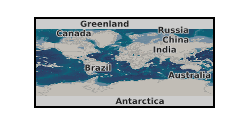
In March 2010, the Scottish CCS (Carbon Capture & Storage) Consortium began an extensive Front End, Engineering and Design (FEED) study to assess what would be required from an engineering, commercial and regulatory, perspective in order to progress the CCS demonstration project at Longannet Power station in Scotland through to construction. The study yielded invaluable knowledge and the resulting material are available for download here. This section of the report provides a summary of key decisions and design changes made during FEED that have resulted from the development of the End-to-End solution and the design works conducted by each of the Consortium Partners. The information described in this section captures the design decisions and changes that have had the most prominent impact on the End-to-End Basis of Design. For each key design change/decision, the background, options considered and the final outcome is described. The ScottishPower CCS Consortium Decision Register can be found in PDFs . The appropriate summary section from the Feed Close Out Report can be downloaded as a PDF (Key FEED decisions.pdf). The main text of the FEED Close Out Report, together with the supporting appendix for this section can be downloaded as PDF files. Note this dataset is a duplicate of the reports held at the National Archive which can be found at the following link - http://webarchive.nationalarchives.gov.uk/20121217150421/http://decc.gov.uk/en/content/cms/emissions/ccs/ukccscomm_prog/feed/scottish_power/feed_decisions/feed_decisions.aspx
-

During 2010-11, as part of the Carbon Capture & Storage (CCS) Demonstration Competition process, E.ON undertook a Front End Engineering Design (FEED) study for the development of a commercial scale CCS demonstration plant at Kingsnorth in Kent, South East England. The study yielded invaluable knowledge and the resulting material is available for download here. This chapter is devoted to the transportation and injection infrastructure requirements of the Kingsnorth Carbon Capture and Storage development. This encompasses a 36 inch (outside diameter) pipeline which runs onshore for approx 10 km and offshore in the Southern North Sea for 260 km, a platform in the vicinity of the Hewett field location, and appropriate facilities both for the conditioning of CO2 before pipeline entry and the processing of the CO2 stream prior to injection into the sequestration site. The chapter highlights in particular the following areas:- Critical assumptions; Platform Concept Selection; Transport Solution Selection; Pipeline Key Issues; Pipeline Pre-Commissioning; Temperature; Emergency Shutdown; Personnel Safety; Venting; Flow Assurance Modelling. Throughout the execution of the work described in this chapter significant opportunity was taken to ensure that the interfaces from capture (and compression) to pipeline/platform and to wells/storage were managed closely. This was achieved by cross system interface management meetings organized to consider interface issues and to compare issues raised in separate HAZIDs. The purpose of conceptual design has been to identify the problems to be addressed comprehensively by the next stage of FEED and this suite of reports provides valuable insights to the challenges faced. All aspects of establishing an agreed philosophy for design and operation of a storage and transport system for CCS begin with understanding what the initial CO2 flow conditions will be at the interface between the well perforations and the reservoir (i.e. at the sandstone face at the bottom of the well). Further supporting documents for chapter 6 of the Key Knowledge Reference Book can be downloaded.
-
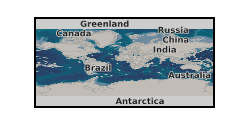
In March 2010, the Scottish CCS (Carbon Capture & Storage) Consortium began an extensive Front End, Engineering and Design (FEED) study to assess what would be required from an engineering, commercial and regulatory, perspective in order to progress the CCS demonstration project at Longannet Power station in Scotland through to construction. The study yielded invaluable knowledge and the resulting material are available for download here. This section of the report contains a high-level monthly summary of the total costs incurred performing the Consortium's FEED study. This information is provided with the aim of enabling potential developers of CCS projects to estimate up front FEED costs. A detailed cost breakdown is also provided for each of the key parties within the Consortium in the form of Cost, Time and Resource (CTR) information in PDFs below, under the following references: UKCCS - KT - S1.0 - SP - 001 ScottishPower CTR Summary; UKCCS - KT - S1.0 - ACC - 001 Aker Clean Carbon CTR Summary; UKCCS - KT - S1.0 - NG - 001 National Grid CTR Summary; UKCCS - KT - S1.0 - Shell - 001 Shell CTR Summary; The detailed CTR information provides a breakdown of the actual labour effort used for the totality of the FEED scope of work, presented by month and by CTR activity, the type of expertise used, the number of hours worked and the associated costs. The split between internal and external costs is shown, together with the original budget estimates developed for each CTR prior to commencing FEED. The appropriate summary section from the Feed Close Out Report can be downloaded as a PDF (FEED cost.pdf). The main text of the FEED Close Out Report, together with the supporting appendix for this section can be downloaded as PDF files. Note this dataset is a duplicate of the reports held at the National Archive which can be found at the following link - http://webarchive.nationalarchives.gov.uk/20121217150421/http://decc.gov.uk/en/content/cms/emissions/ccs/ukccscomm_prog/feed/scottish_power/feed_cost/feed_cost.aspx
-
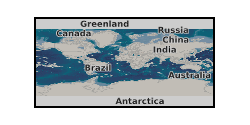
In March 2010, the Scottish CCS (Carbon Capture & Storage) Consortium began an extensive Front End, Engineering and Design (FEED) study to assess what would be required from an engineering, commercial and regulatory, perspective in order to progress the CCS demonstration project at Longannet Power station in Scotland through to construction. The study yielded invaluable knowledge and the resulting material are available for download here. This section of the report illustrates how the End-to-End CCS chain must be considered as a system as well as separate elements. It builds upon the description of the individual elements contained in Section 3, and captures the development of the End-to-End CCS chain design carried out during FEED. Specifically, this section focuses on the following aspects: Commissioning the system in preparation for operations, as well as decommissioning at the end of the capture and storage period; Operations and maintenance activities; Control; Metering and monitoring; Venting; This section also provides some selected information on the individual CCS chain elements and a summary of the RAM (reliability, availability and maintainability) analysis undertaken during FEED of which one of the key outputs was the anticipated CO2 injection profile for the project. The appropriate summary section from the Feed Close Out Report can be downloaded as a PDF (End to end CCS chain operation.pdf). The main text of the FEED Close Out Report, together with the supporting appendix for this section can be downloaded as PDF files. Note this dataset is a duplicate of the reports held at the National Archive which can be found at the following link - http://webarchive.nationalarchives.gov.uk/20121217150421/http://decc.gov.uk/en/content/cms/emissions/ccs/ukccscomm_prog/feed/scottish_power/ccs_chain/ccs_chain.aspx
-
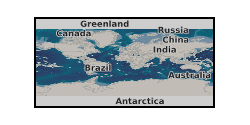
In March 2010, the Scottish CCS (Carbon Capture & Storage) Consortium began an extensive Front End, Engineering and Design (FEED) study to assess what would be required from an engineering, commercial and regulatory, perspective in order to progress the CCS demonstration project at Longannet Power station in Scotland through to construction. The study yielded invaluable knowledge and the resulting material are available for download here. This section of the report is provided as a support document to the tangible learning and documentation contained within the FEED Close Out Report and accompanying appendices. The experiential learning of the teams working across key functions of the FEED study was captured in guided discussions halfway through FEED to establish the specific challenges, successes and learning of the various workstreams involved in undertaking FEED. Representatives from all the workstreams were brought together in December 2010 for a Consortium-wide Lessons Learned Workshop to capture specific, discrete lessons that could benefit future CCS FEED studies in the UK and abroad. Five key themes emerged consistently across workstreams: Ensuring an appropriate mobilisation period Early engagement with key stakeholders Cross-Consortium communication to present an integrated Consortium Recognising restrictions imposed by the bounds of a competitive procurement Working with uncertainty across regulation, scope, budget and political will Workstream specific learning outcomes are summarised in the main report, with detailed examples included in the appendices. The technical and communication workstream appendices both contain examples of actual documents used during the ScottishPower Consortium FEED (National Grid CCS staff training material and the ScottishPower Consortium Communications Strategy) that were considered useful for future CCS project Developers. The appropriate summary section from the Feed Close Out Report can be downloaded as a PDF below (Lessons learned.pdf). The main text of the FEED Close Out Report, together with the supporting appendix for this section can be downloaded as PDF files. Note this dataset is a duplicate of the reports held at the National Archive which can be found at the following link - http://webarchive.nationalarchives.gov.uk/20121217150421/http://decc.gov.uk/en/content/cms/emissions/ccs/ukccscomm_prog/feed/scottish_power/lessons/lessons.aspx
-
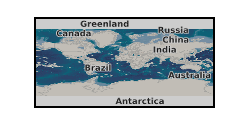
In March 2010, the Scottish CCS (Carbon Capture & Storage) Consortium began an extensive Front End, Engineering and Design (FEED) study to assess what would be required from an engineering, commercial and regulatory, perspective in order to progress the CCS demonstration project at Longannet Power station in Scotland through to construction. The study yielded invaluable knowledge and the resulting material are available for download here. This section of the report provides details on the organisation and management of the design as well as key design information for the End-to-End CCS chain. This includes the following: Organisation of the design teams; The End-to-End Basis of Design; The design life; The End-to-End CCS chain process; Piping and instrumentation diagrams; Plant and site layout drawings for the various sites; Equipment; Plant and equipment specifications; Subsurface engineering design reports; No attempt has been made to generalise design data. All of the design information presented is specific to the ScottishPower Consortium Project and has been presented to provide an insight into the development of the End-to-End CCS solution. The FEED design study was based on the Outline Solution developed by the Consortium prior to FEED. The Outline Solution was a conceptual design for the End-to-End CCS chain that was considered to be technically feasible within the constraints of the knowledge available at the time. It included a series of optioneering studies to identify the preferred design for this particular project. During FEED, the Outline Solution design was developed in greater detail to reduce the cost and technical uncertainty, and consequently reduce the financial, programme and technical risks prior to commencing the implementation stage of the project. It must be stressed that a FEED study is carried out to develop a design to the degree that the technical and programme risks are reduced to the agreed limits to better inform the project cost estimate. The current status is that the design has been progressed as far as is practicable within the time and cost constraints of the FEED study. Specifications and datasheets for major equipment have been developed in order that they can be issued to potential suppliers during the implementation phase of the project. The FEED study identified further activities that cannot be performed at the FEED stage of the project but which have been recorded as actions for further investigation during the implementation stage. The FEED study has advanced the development of the application of CCS technology considerably. Though research and conceptual studies are essential to the development of any new technology, they cannot identify many of the difficult design issues that are identified and addressed during a FEED study. Similarly the progress from FEED to the implementation phase is expected to present further challenges for a project of this novel nature. However, the advantage of a FEED study is that the main issues that could present high cost or programme difficulties or even potential 'show stoppers' should already have been identified and, where possible, addressed. Key decisions and design changes taken during the FEED study are explained in Section 11 of the report. The FEED study indicates that CCS remains technically feasible. The appropriate summary section from the Feed Close Out Report can be downloaded as a PDF (Design.pdf). The main text of the FEED Close Out Report, together with the supporting appendix for this section can be downloaded as PDF files.
 NERC Data Catalogue Service
NERC Data Catalogue Service